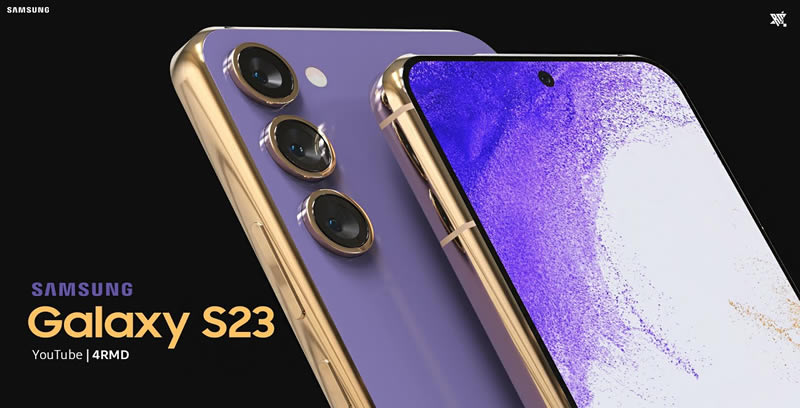Search result

The Samsung Galaxy S7 and S7 Edge were near-perfect devices on release, with super high resolution 2K displays, fastest processors, lightning quick fingerprint scanners and much more. But if one was allowed to nitpick, its 5-megapixel front camera might just stick out like a sore thumb. Is the 5-mp resolution going to get a bump this year? Frankly, we are not sure! On the positive side though, we now have a report from etnews that Samsung is going to cater to the selfie-freaks among us by adding autofocus to the front camera of the Galaxy S8-series.
We are well aware that an autofocus feature alone cannot really compensate for a low-resolution and now dated camera module, especially when compared to the likes of the LG V20 and the Google Pixel phones. Therefore, we are hopeful that Samsung will accompany the autofocus feature with an improved sensor as well. Given that Apple bumped up the resolution of the iPhone's FaceTime camera from 5-mp to 7-mp this year, the pressure is definitely on Samsung to raise its selfie-standards!
Saikat Kar (tech-enthusiast)
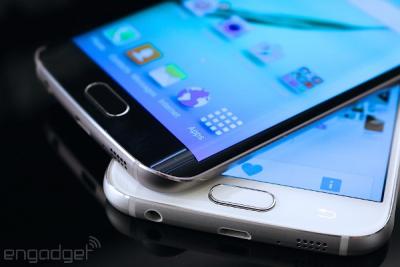
Before you get too excited, let me tell you upfront that the upcoming Galaxy A (2017)-series is probably not going to get the curved display as you might be thinking. To the best of our knowledge, they will sport flat screens just as their predecessors. However, rumors are going around suggesting that at least some of the Galaxy A smartphones which will be introduced in 2017 could very well sport the Super AMOLED curved panels which we have so far only seen on the flagships from Samsung.
Even though it is just a rumor and a very light one at that, if Samsung does actually decide to shift onto curved displays for the Galaxy A-line up, we think we know the reason why they would do that. The answer is competition. Although Samsung still is the global king of smartphones, in certain Asian markets like China, its market share is dwindling. The reason for this downfall is of course, competition from big Chinese brands like Oppo, Xiaomi, Huawei and many others. These Chinese companies are selling phones with hardware similar to those offered by the established brands at half the price. Samsung needs to distinguish its smartphones by endowing them with unique features at a competitive price in order to survive in the low to mid-range market and its brilliant Super AMOLED curved display can definitely give Samsung mid-range phones the "edge" they need.
Saikat Kar (tech-enthusiast)
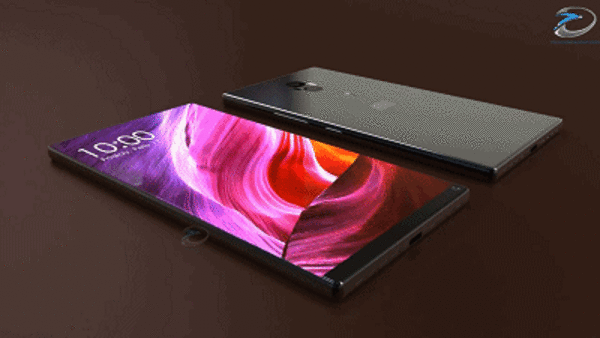
Weibo has long since been the ultimate place to find awesome leaks and this one is no exception either. If the news does turn out to be true, then it would truly be awesome for fans of the Chinese smartphone maker Xiaomi. It should be noted that although Samsung is currently leading the pack with their new generation of bezel-less beauties (Galaxy S8/S8+), it was Xiaomi who reinvented the genre with the Mi Mix after the Sharp Aquos began the trend back in 2014.
According to the report, the highly anticipated Mi Mix 2 and Mi Note 3 are likely going to sport curved AMOLED displays made by Samsung. Given that Samsung's curved AMOLED displays are inarguably the best in the business, it looks like we are in for some seriously stunning smartphones from Xiaomi this year. The only gripe is that those models have so far not been released outside China. Let' hope that the Chinese manufacturer changes up its strategy this year around.
Via: The Android Soul
Saikat Kar (tech-enthusiast)

The myth of the Samsung foldable smartphone continues as the latest rumors and reports are pointing towards some additional info. Apparently, the Galaxy X, aka Samsung's first foldable smartphone is coming in 2019, but it will be expensive, very expensive! If you though that latest flagship smartphones touching the $1,000 mark was crazy, wait till the Galaxy X hits the market with a price tag close to 2 million won or $1900!
The 7.3-inch (rumored) foldable phone will either carry two or even three separate AMOLED displays which will lock together into one single device on opening, or there will be just one amazing, foldable display. Given the rumored prize tag though, it better be amazing! In any case, the price tag might just put off buyers because shelling out that kind of money for one smartphone is neither feasible nor intelligent for most users, but then again, you may never know! The phone could make an appearance at the CES 2019 first, but it will likely be a private showing and limited to the eyes of the investors and partners only.
Saikat Kar
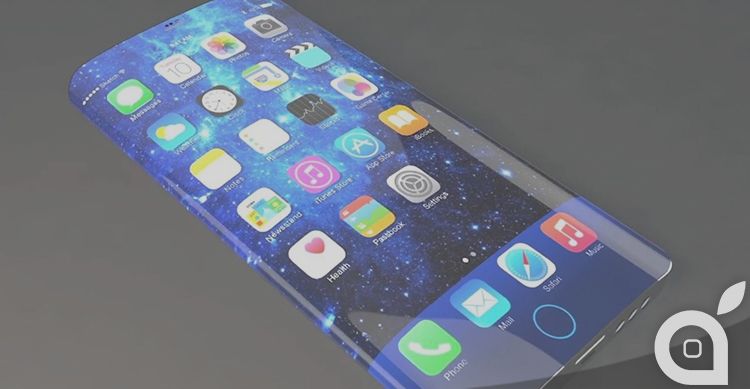
According to market analysts like JPMorgan Chase, Apple has ordered OLED panels in huge quantities, as made evident from the company's 10-K filing. The orders amount to a total of $4 billion approximately, with Samsung being the number one beneficiary, followed by JDI and Sharp.
The multi-billion dollar purchase orders are extended over the period of an entire year and the popular consensus is that the panels will be used to construct the iPhone 8's display. Manufacturing costs associated with OLED panels have come down drastically in the last year or so, to the point where they can actually be cheaper to produce than the LCD panels, when manufactured on a large scale. Therefore, it only seems logical that Apple will shift towards OLED which offers better colors, deeper blacks and even greater power-efficiency, as compared to LCD.
In other news, Apple has patented an AR mapping tech which will provide the user with real-time augmentation with his/her surroundings while using the concerned application. Wireless charging could also be included in the iPhone 8, provided that Foxconn manages to iron out the kinks in its Energous WattUp tech that can be used to charge a smartphone from as far as 15 feet!
Saikat Kar (tech-enthusiast)

A new rumor has it that Apple will be introducing bendable plastic LCD panels from JDI with the iPhone 8. However, that seems quite improbable unfortunately for Apple fans. Although the flexible LCD panels, also known as Full Active Flex screen could have given the dual curved Edge displays from Samsung a bit of competition, JDI has no plans of entering into mass production of the panels before 2018. While this does mean that future iPhones could very well be sporting the bendable displays that the rumors have been predicting, it is very unlikely that the iPhone 8 will be sporting it in 2017.
In a report by Reuters, it was stated that Liberum analyst Janardan Menon is implying that STMicroelectronics has struck a major deal with Apple. The deal was probably even mentioned in the company's financials for 2016, albeit anonymously. If it is true, then STMicroelectronics will probably be supplying Apple with a new type of proximity sensors for the iPhone 8. What these new sensors will be used for is beyond us at this moment, but it could have something to do with AR or VR integration. We will find out more soon enough.
Saikat Kar (tech-enthusiast)
The casino industry isn't necessarily considered high-tech. Even those so-called state-of-the-art slot machines have their roots back in the 1890s. In a way, it's understandable - why fix a winning system? Why change something when you don't need to?
That's not to say that casinos are immune to technological advancements. While the games that we play are the same as they were a hundred years ago, the way that we play them has changed. The most extensive of these changes is the move from brick and mortar establishments to online gaming.
While it took some doing, casinos were finally able to move into the online sphere legally. That's not where the evolution ended, however. Casinos like สมัคร Gclub Casino have taken further steps to offer consumers genuinely mobile gaming.
As you'll see on this page for สมัคร Gclub Casino, if you have a smartphone and an internet connection, you may gamble almost anywhere in the world. In this post, we'll look at why casinos have moved onto mobile.
Why Casinos Opt for Mobile Models
There's nothing quite like the experience of being in a brick and mortar casino for a punter. The casino owners prime the environment so that it's as inviting as possible. Tricks of the trade include cutting off all outside light, giving free drinks, ensuring that machines pay out regularly, and sometimes even increasing the amount of oxygen pumped into the air to keep gamblers alert.
The goal is to ensure that gamblers have fun and are less aware of the passage of time. The theory is that the more they're enjoying themselves, the longer they'll stick around. It's a tried and tested method, and most industry experts agree that it works.
These techniques do, however, make running a brick and mortar casino expensive. Aside from that, not all punters bet every day. Going to the casino might be seen as an outing. For many punters, it's not convenient to go to the casino regularly.
Some avoid the environment because they understand the tactics that casinos employ. In other cases, visiting a casino regularly might not be an option because it is too far away.
Enter the Online Casino World
Online gaming and advances in technology have helped casinos fill in the gaps. Online casino games were initially plagued by issues such as stilted play, glitches, and easily definable patterns. As technology has improved, however, the gameplay has become a lot more realistic.
Artificial intelligence can be incorporated into casino gaming software to ensure that the results of some games are entirely random. AI may also be used to ensure that dealers in games like blackjack act more like the real thing.
Online gameplay allows casinos to reach a broader market and cut their costs. Instead of footing the bill for banks of slot machines, rental costs, employees, and all the associated freebies, online casino owners can start a site with a relatively low investment. Overheads to maintain the site are also significantly lower than with a brick and mortar store.
Why Mobile Gaming?
Mobile gaming was the logical next step. When was the last time that you left home without your phone? Mobile gaming allows casinos to reach punters whenever they have a few free moments. It would be highly unusual if casinos like Gclub didn't offer their patrons a mobile option.

Samsung developed Odin as a utility software to be used for flashing custom recovery firmware images onto any Samsung device that's powered by Android. In the course of this article, you will learn how to use it safely to manually install the various custom ROM firmwares, updates and kernels available for your smartphone.
What you will need
1. A Windows PC
2. Your smartphone/tablet
3. A USB cable to connect the device to your Windows PC
Preparations before you begin
1. Back up all important data that's currently on your smartphone as you might lose them during this process.
2. Install the latest Samsung USB drivers onto your PC. You can download and install Samsung Kies, which will do it automatically for you, but feel free to download and install them manually if you so choose.
3. Keep USB Debugging enabled on your Samsung device.
4. Charge the battery of your device to a minimum of 80%.
5. Once you have installed the latest USB drivers, make sure that you exit Kies before proceeding further as it's known to interfere with Odin at times.
6. Download and unzip the custom ROM or the official firmware which you want to flash onto your Samsung device. Make sure that your device's model number and the model number of the firmware match perfectly or you will run the risk of bricking your device.
Downloading, installing and running Odin
1. Download the latest version of Odin.
2. It will be in a .zip file format, so you will need to extract it.
3. Go into the extracted file folder and right click on the Odin3 v3.x.exe file ("x" represents the version of the software which will vary depending on which version you downloaded) and left click on "run as administrator."
4. Odin will now start and on the very first screen, make sure that the only two options checked are "Auto Reboot" and "F. Reset Time."

Installing the firmware
1. Switch off your Samsung device.
2. Hold down on the Power button, Home button and the Volume Down button at the same time.
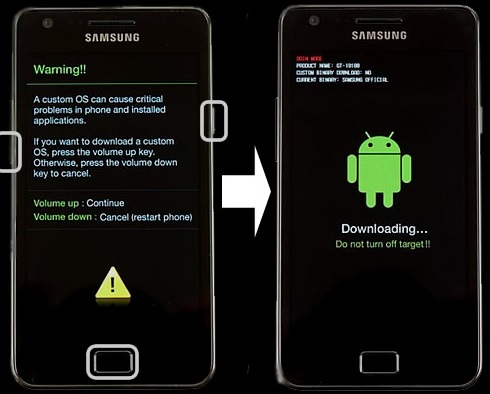
3. When you see the warning screen, complete with a yellow triangle that has an exclamation mark inside, let go of the three buttons and press only the Volume Up button to enter Download Mode.
4. Now connect your device to your PC via USB and wait until you see a box just under the "ID:COM" tab light up in blue (the color may vary depending on your version of Odin). The number you see in the box is the USB port number which your phone/tablet is using to connect to the PC. You may also see a new "Added" message in the bottom left panel.

5. Left click on "AP" or "PDA" and browse the folder where you had previously unzipped the firmware package to find the firmware file which should have tar.md5 at the end of its name.
6. Once Odin has loaded up the file, click on "Start" to begin the process.

7. Wait until the process finishes and you see a green "Pass" button indicating that you have managed to successfully flash the custom ROM onto your device.
What if the update package contains more than just one file (tar.md5)?
In that case, you will need to simply add a few extra steps to the process after step 4 and in place of step 5. After that, just follow the instructions from step 6 and step 7 to complete the process.
1. Click on "AP" or "PDA" and select the file with the term "PDA" in its name.
2. Click on "CSC" and select the file with the term "CSC" in its name.
3. Click on CP and select the file with the term "modem" in its name.
*All files will be in the folder where you unzipped the downloaded firmware package.
**In case any of the files are not in the package, you don't need to worry as it means that the missing file is not necessary for the flashing process.
Saikat Kar (tech-enthusiast)

The security patch for January 2017 has started to roll out to the Galaxy J2 Prime and the Galaxy Grand Lite. While it's only natural for the J2 Prime to receive the update as it was only released last November, it is both surprising and good to see that Samsung still remembers the Grand Lite which was released almost three years ago in 2014. However, an upgrade to Lollipop is not officially on the cards for the Grand Lite as it continues to run on the ancient Android 4.4.4 KitKat OS.
The firmware version containing the update for the J2 Prime is G532GDXU1AQA4, while the one for the Grand Lite is I9060CUBS0AQA1. If you have an old Samsung smartphone that you want to upgrade but an official upgrade from Samsung is highly unlikely, head over to our firmware section and find the right custom ROM for your particular handset model. The only thing is that we recommend taking a look at our tutorial at least once before attempting to flash any ROM updates.
Saikat Kar (tech-enthusiast)
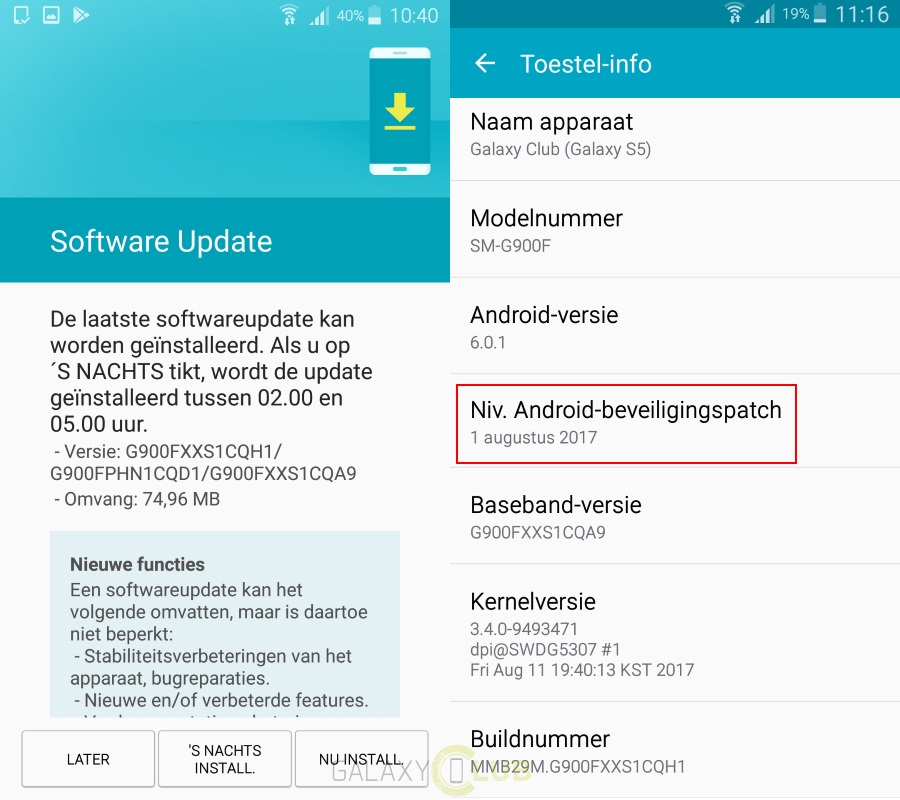
The Galaxy S5 is still receiving timely updates from Samsung, although it is over three years old at this point. It's not that we are complaining of course! In fact, it is always nice to see Samsung showing some love to older handsets and the Galaxy S5 was indeed the king of Samsung's roster back in 2014.
As per reports, the August security patch is making rounds in Europe at the time and if your S5 still hasn't got it, it will in the next day or two. Most other regions will get the same update as well, but the timeline will differ depending on your location. The OTA update will come in at a size of 74.96MB and the firmware version on it will be GH900FXXS1CQH1.
In case you are wondering, we are yet to receive any confirmation regarding whether or not the Galaxy S5/S5 Neo will receive an upgrade to Android Nougat. Nevertheless, we will keep you updated on the news as always.
Head over to our firmware section to find all the latest available updates for your Samsung smartphones and tablets.
Saikat Kar (tech-enthusiast)

There was a time when Samsung was the undisputed king of the world's second largest smartphone market, which is India, but times have changed and a huge portion of its market share has now been eaten up by Chinese rivals, especially Xiaomi; a brand that has just recently launched the outrageously priced (in the best way possible) Pocophone F1. However, Samsung is not ready to give up without a fight and as part of the band's resurgence attempts in India, Samsung has just launched the biggest Samsung exclusive store in the world at Bengaluru.
The 33,000 square foot place comes in right on the heels of the company launching the world's largest smartphone manufacturing plant (33-acres) at Noida, India in July. The store will also have a service center and it will have all of Samsung's latest and greatest products in the consumer electronics category, as long as it is launched in India of course.
Saikat Kar
© 2023 YouMobile Inc. All rights reserved
